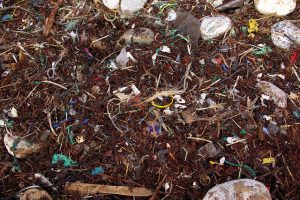Plastics have become part of everyday living it seems. There are plastic water bottles, zip-top bags, the water cooler at work, resealable containers you take your lunch in, and so much more. We barely give these things a thought most days, but if you’ve ever considered the impact these materials are having on the environment or your health, it’s a good idea to also think about microplastics and their effects.
What Are Microplastics?
Microplastics are small bits of plastics that measure less than five millimeters. That’s about the size of a sesame seed. But where do microplastics come from? It comes in many shapes and sizes and sources. One source is the break down of larger plastics over time. These are considered secondary microplastics. Another is plastic microbeads from health and beauty products, like exfoliating body wash and toothpaste. And because they were manufactured at such small sizes, these commercially used microplastics are categorized as primary microplastics. Microplastics are particularly problematic in the environment because they go through water treatment plants unchanged and untouched, and end up in our waterways and oceans. Once they are part of the global water cycle much marine life will mistake them for food or inadvertently ingest them.
Common Microplastic Sources
One of the more common ways humans ingest microplastics is through eating seafood. That’s because the microplastics are inundating marine environments and sea life eats it, and we eat sea life. Oysters and mussels tend to have a higher contamination rate than other sea life. Even deep-sea creatures are being affected by microplastics. Other avenues microplastics have found into our food supply are sea salt, honey, and beer.
Why Are Microplastics Unhealthy?
Microplastics are harmful to your health. These small bits of plastic are not made of organic materials and therefore have synthetic chemical makeup that do not break down easily or quickly and can bind to other harmful chemicals or compounds to create a very serious situation. Once microplastics are in the human body, it is unclear what happens and the effects of these inorganic foreign objects.
Science is clear on the fact that phthalates are responsible for plastics flexibility and that they contribute to the growth of certain kinds of cancer cells. If the human body is accessing the phthalates in consumed microplastics, then there is a potential risk there. The livers of some fish and mice have been found to have accumulations in their livers. And bisphenol A (BPA) has been found to leak out into foods that are packaged in it.
Plastics and microplastics are known to be harmful to the environment, but not enough research has been done on the effects it has on human health. Certain chemicals found in plastics, like BPA and phthalates have been shown to increase the risk of disease, so if you are concerned about how much you are ingesting or how it may affect your body, a good rule of thumb is to stay away from plastics as much as possible.




